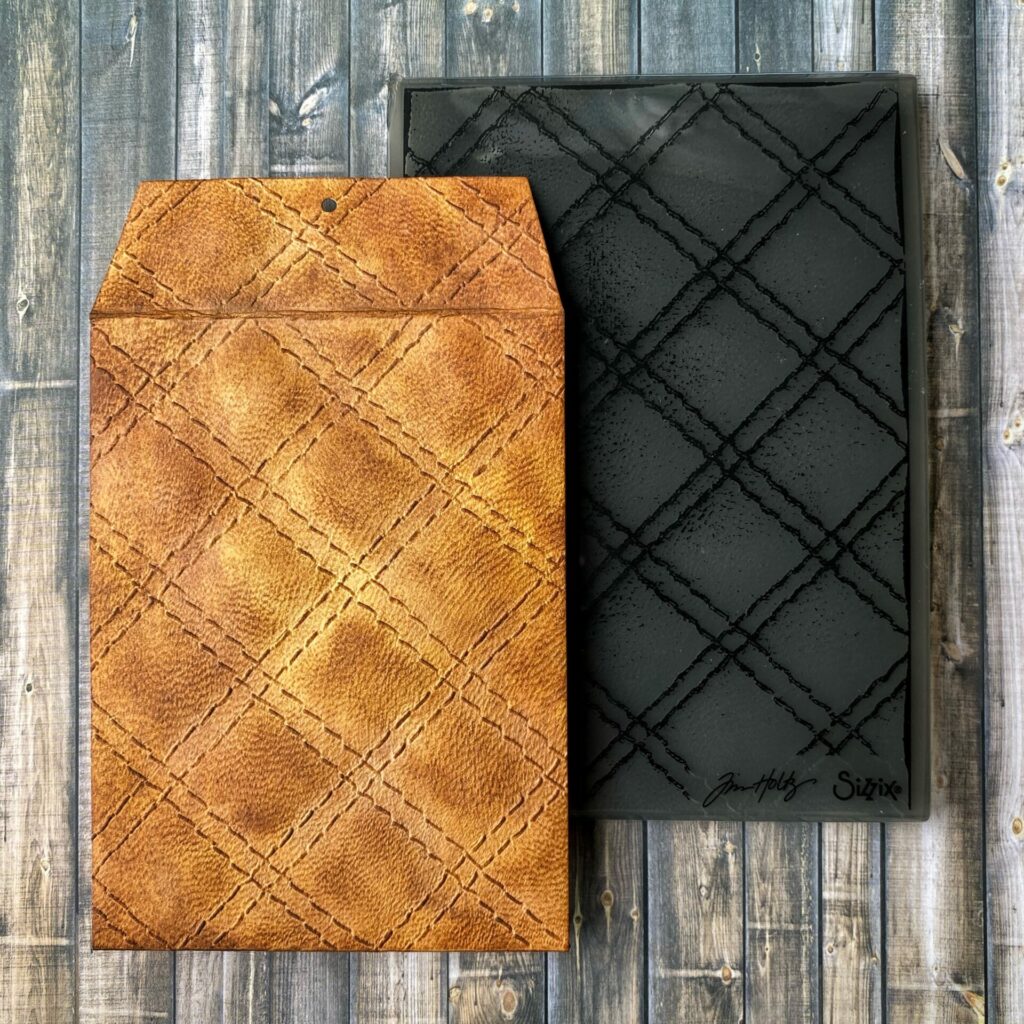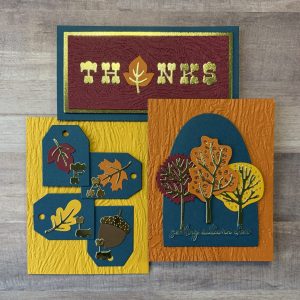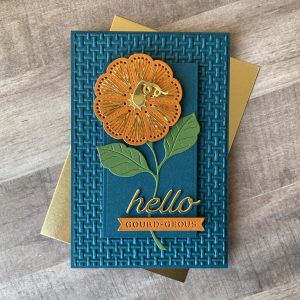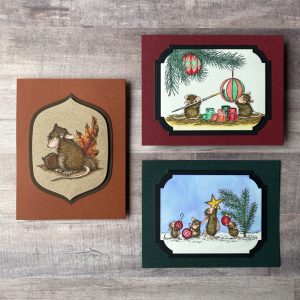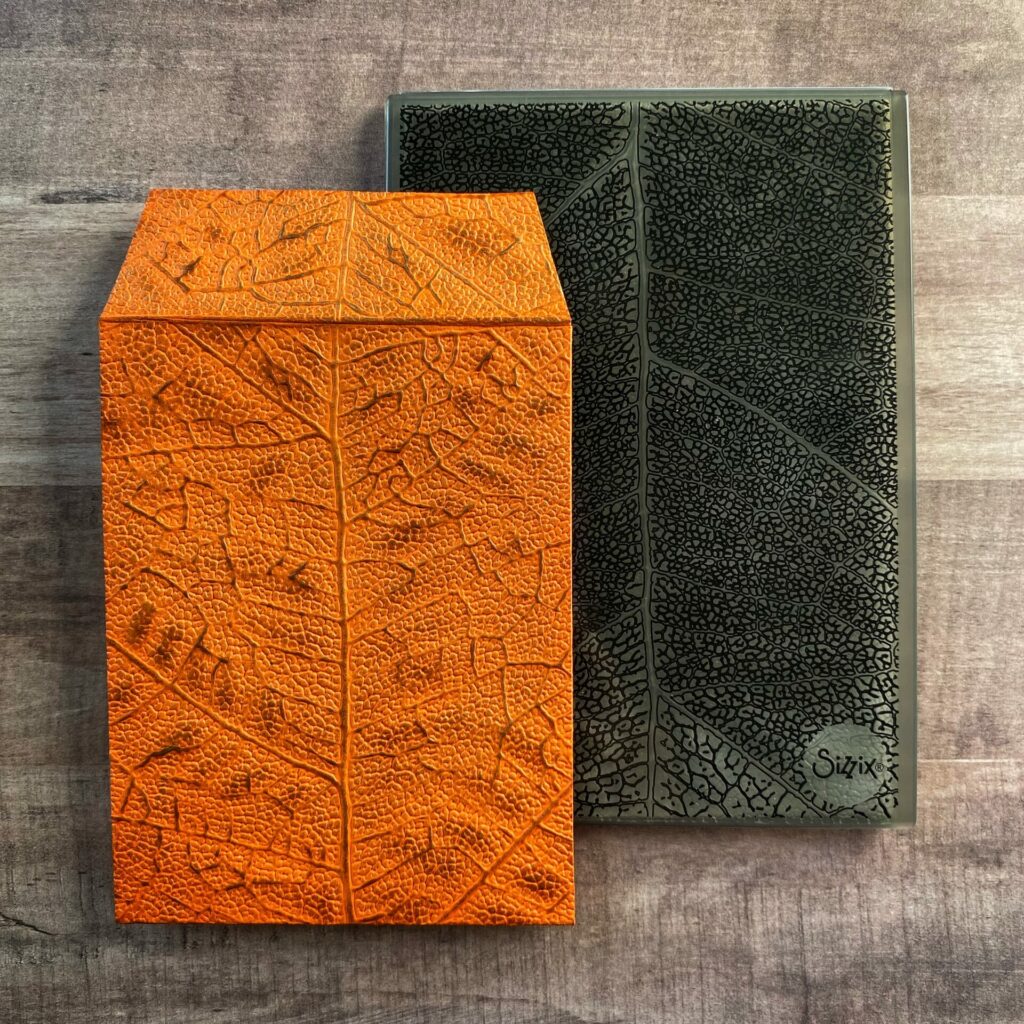
Leaf Embossed Envelope
Hello crafty card makers! Today I’m sharing how I made this leaf embossed envelope. It’s perfect for adding texture and style to a otherwise plain and boring envelope. It will also take your handmade cards to the next level! Keep in mind that you can use any embossing folder for this tutorial.
This envelope coordinates perfectly with the leaf thanks card. If you’re interested in the matching card, you can find the tutorial here. This envelope is for 4 bar sized cards. When assembled, the dimensions of the envelope is 5-1/8″ x 3-7/8″. If your planning on sending these through the mail, then I would recommend putting it into a larger envelope or a small mailer. If you want to learn how I made this leaf veins embossed envelope then just keep reading.
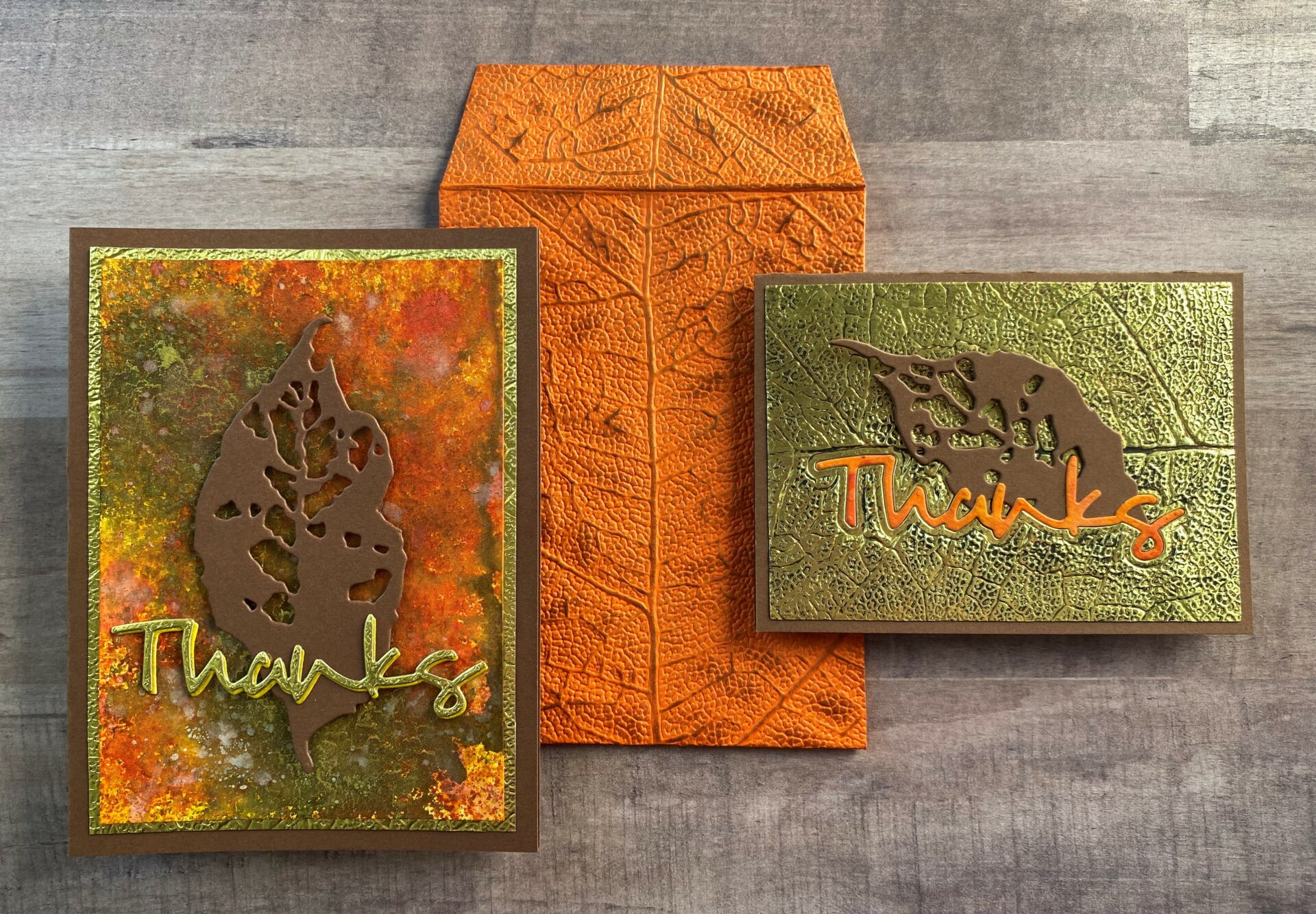
Link Abbreviations
- AMZ – Amazon*
- Sb.com – Scrapbook.com*
- SIZ – Sizzix*
- RI – Ranger Ink*
- SSS – Simon Says Stamp
- HL – Hobby Lobby
Full Disclosure: This post contains affiliate links which are indicated with an (*). If you click on an affiliate link and later make a purchase, I may receive a small commission. Clicking on an affiliate link which earns a commission does NOT result in additional charges to you or cost you anything extra. Money earned via affiliate links helps pay the fees to keep this blog up and running. Thank you so much for shopping through my links to show your support for the brands that we love and the products that I share!
Supplies Used / Substitutions:
- Sizzix Big Shot | SIZ / Any die cutting machine
- Simon Says Stamp 4 Bar Square Flap Envelope Die – SSSD112115 | SSS |
- Sizzix 3D Embossing Folder – Leaf Veins #664488 | Sb.com | SIZ | AMZ / Any embossing folder
- Sizzix Luster Wax – Gold | Sb.com | SIZ | AMZ / Tim Holtz distress foundry wax
- Distress Ink – Crackling Campfire | Sb.com | RI | SSS / Any orange shade of ink
- Simon Says Stamp Cardstock – Orange Peel | SSS / Any cardstock in any color
- Tim Holtz Comfort Paper Trimmer | Sb.com | AMZ | SSS / Any paper trimmer
- Spray Bottle with water | Sb.com | AMZ / Any spray bottle with water
- Distress Collage Medium – Matte | Sb.com | RI | SSS / Any liquid adhesive
- Idea-ology Long Fasteners Brads – TH92703 | Sb.com | SSS / Any flat head brads
- Tim Holtz Retractable Craft Pick | Sb.com | SSS | AMZ | / Any die pick
- Circle Hole Punch – 1/8″ | HL | SSS / Any small hole punch
- Post-it note / Scrap piece of paper
- Washi Tape / Any low tact tape
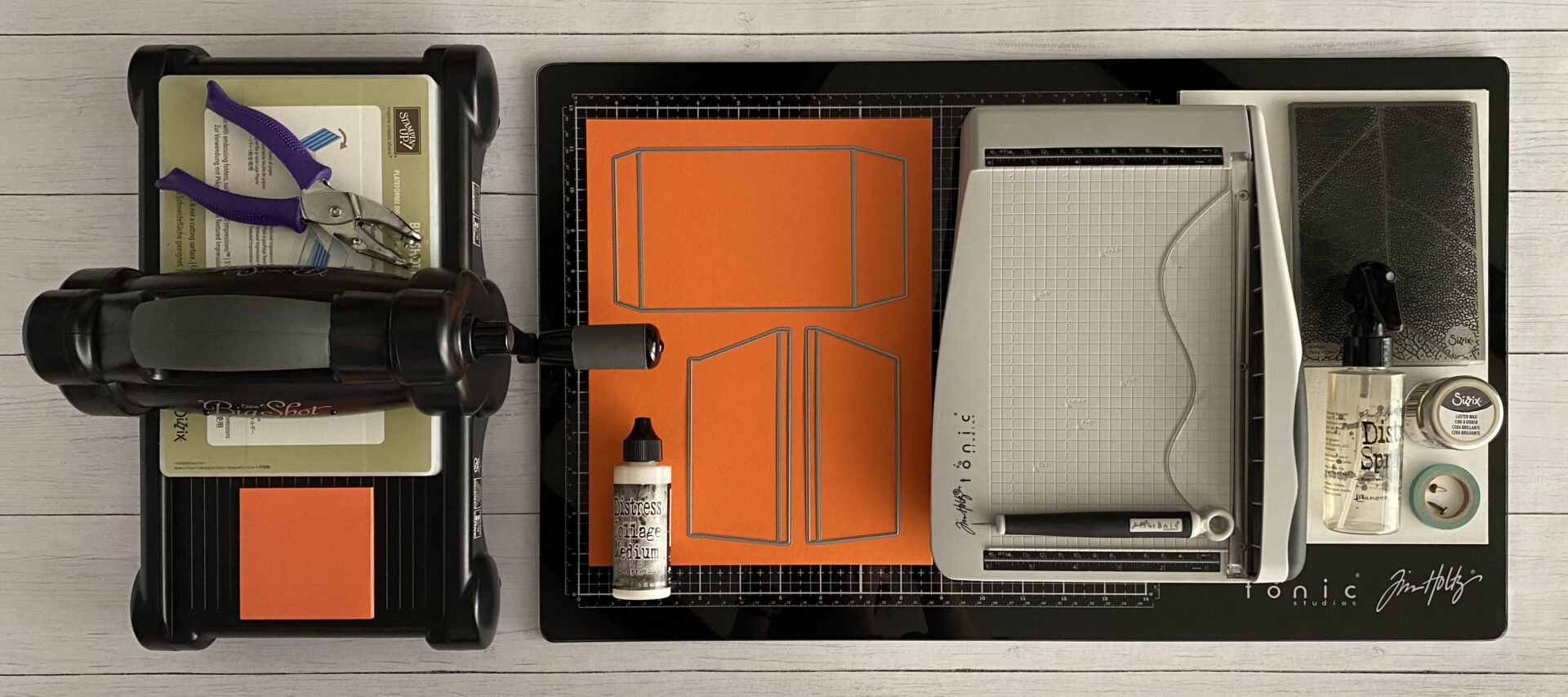
Die Cutting The Envelope
First, I used the Tim Holtz guillotine and trimmed my cardstock to size. I like to get the most out of my paper by trimming my paper close to the size of the dies. But if this is a little too close for comfort, you can cut your paper to be larger. Trimming the paper to 7-1/2″ x 4-1/4″ and 5-3/4″ x 5-1/4″ will give you a little more room.
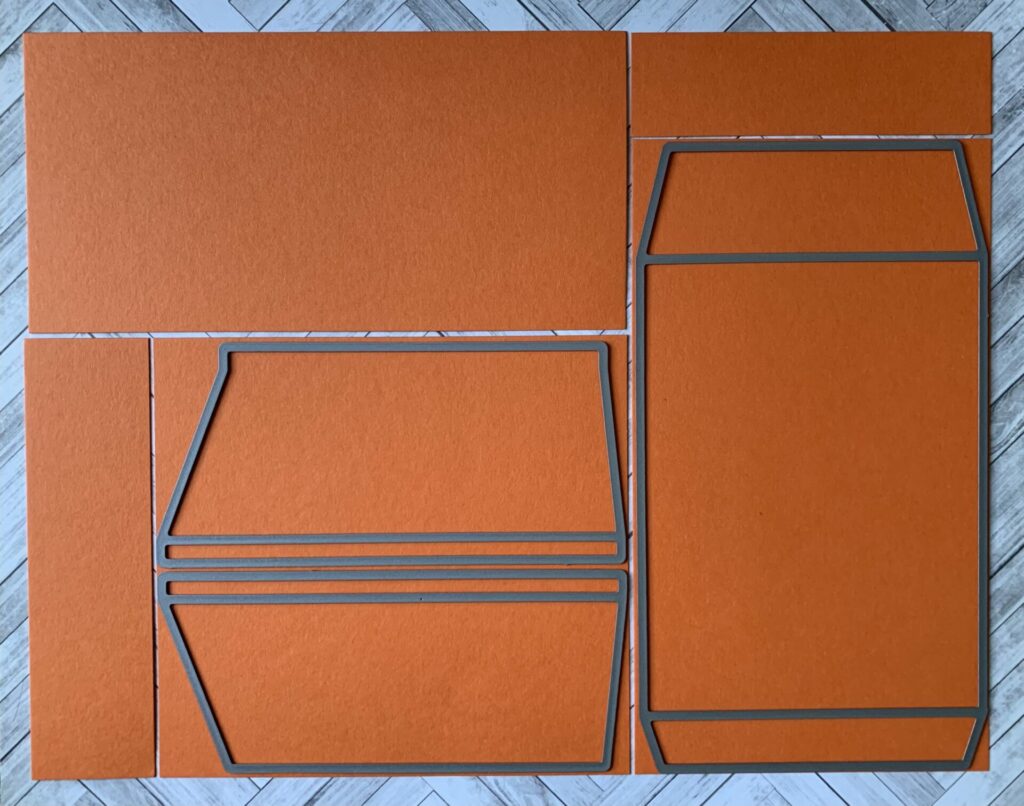
Next, I took my washi tape and taped the dies to the cardstock and ran them through the Sizzix Big Shot.
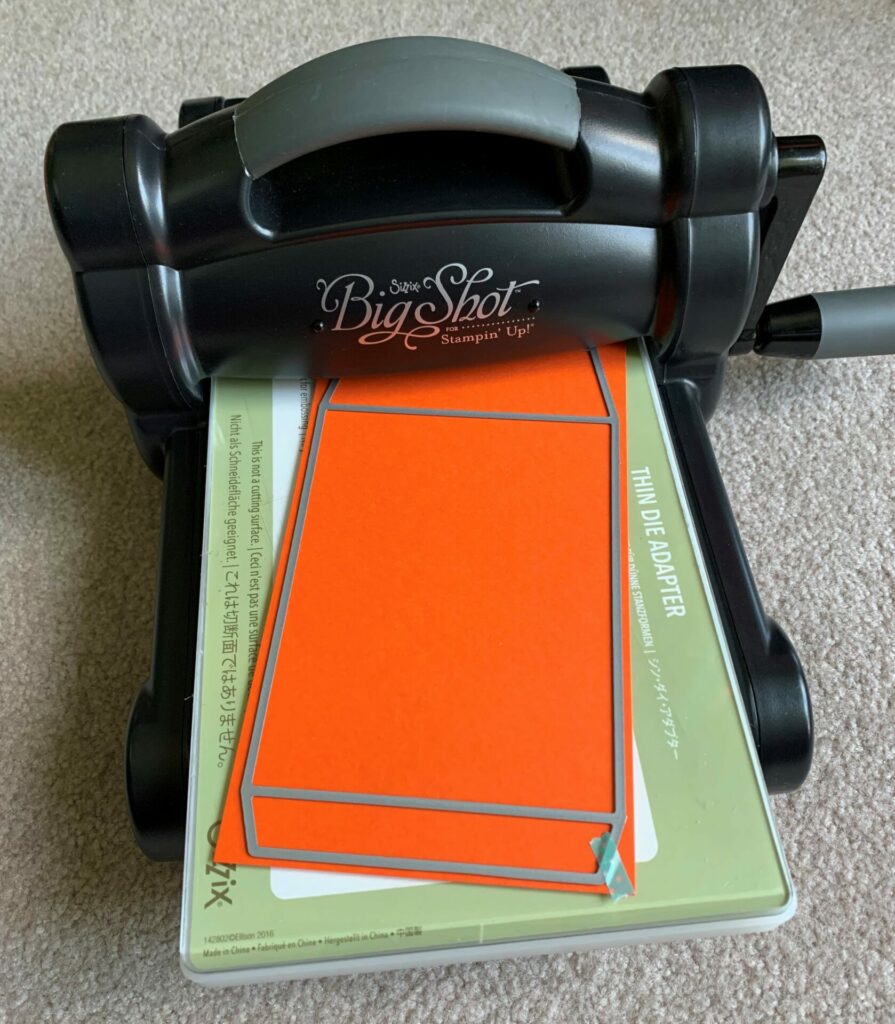
Tracing The Score Lines
Then, I traced the score lines with a pencil and ruler. I do this because the score lines can easily become lost after embossing. This ensures that I don’t lose the fold lines, and I don’t have to guess where they went. Now is also when I fold down the flaps on the envelope front, and reinforce the folds with a bone folder. I leave the back flaps flat for now. The pencil lines can be erased after the envelope pieces are embossed, dry, and folded.

Embossing The Envelope Front
Next, I took the die cut for the front of the envelope and misted both sides with water. The water helps soften the fibers of the paper so it doesn’t crack. For an example of why I recommend using the water spritz, check out my side-by-side photo comparison in my Elegant & Simple Card tutorial. Then, I placed it into the Sizzix Leaf Veins 3D embossing folder (pictured below) and aligned the flap fold line along the bottom of the embossing folder. I closed the folder and ran it through the Sizzix Big Shot three times (it makes for a deeper and crisper impression.) Each machine applies a different amount of pressure. So I recommend doing some small test swatches to see how many passes is ideal for your machine.
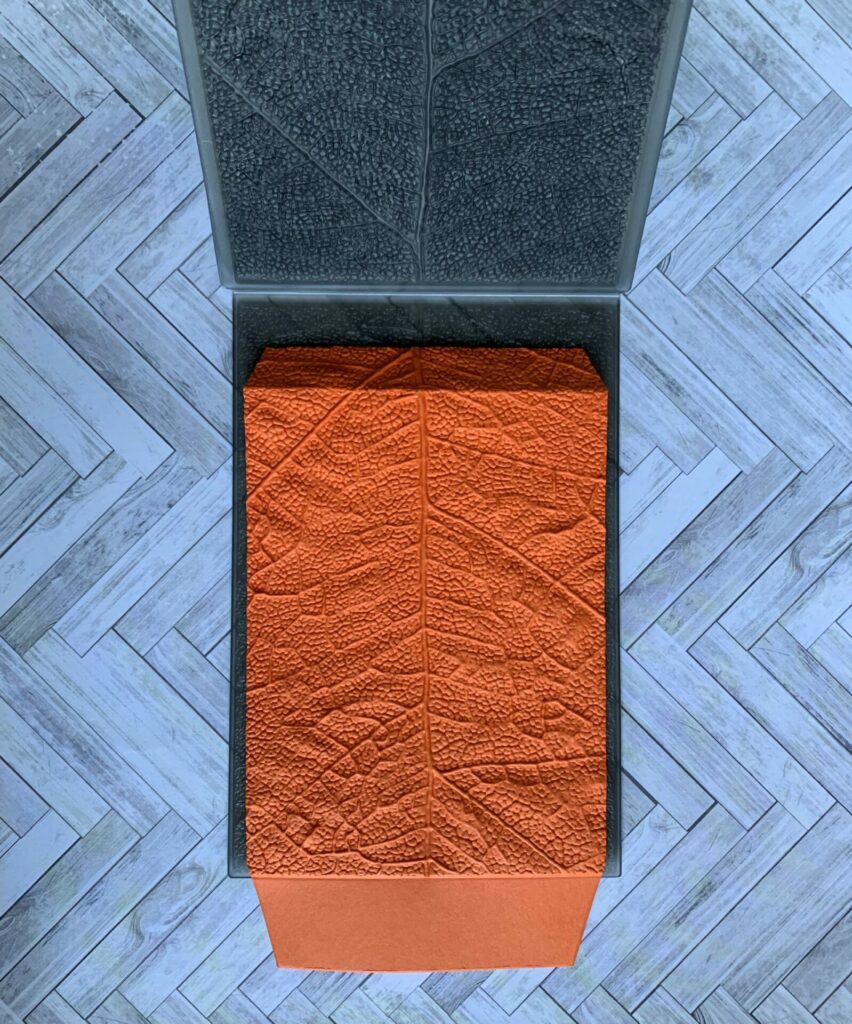
Then, I misted both sides of the flap with water and positioned it into the folder. I aligned the fold line with the bottom edge of the embossing folder and ran it through the big shot (see image below for reference). After that, I reinforced the fold, set my clear cutting pad on it and left it to dry.
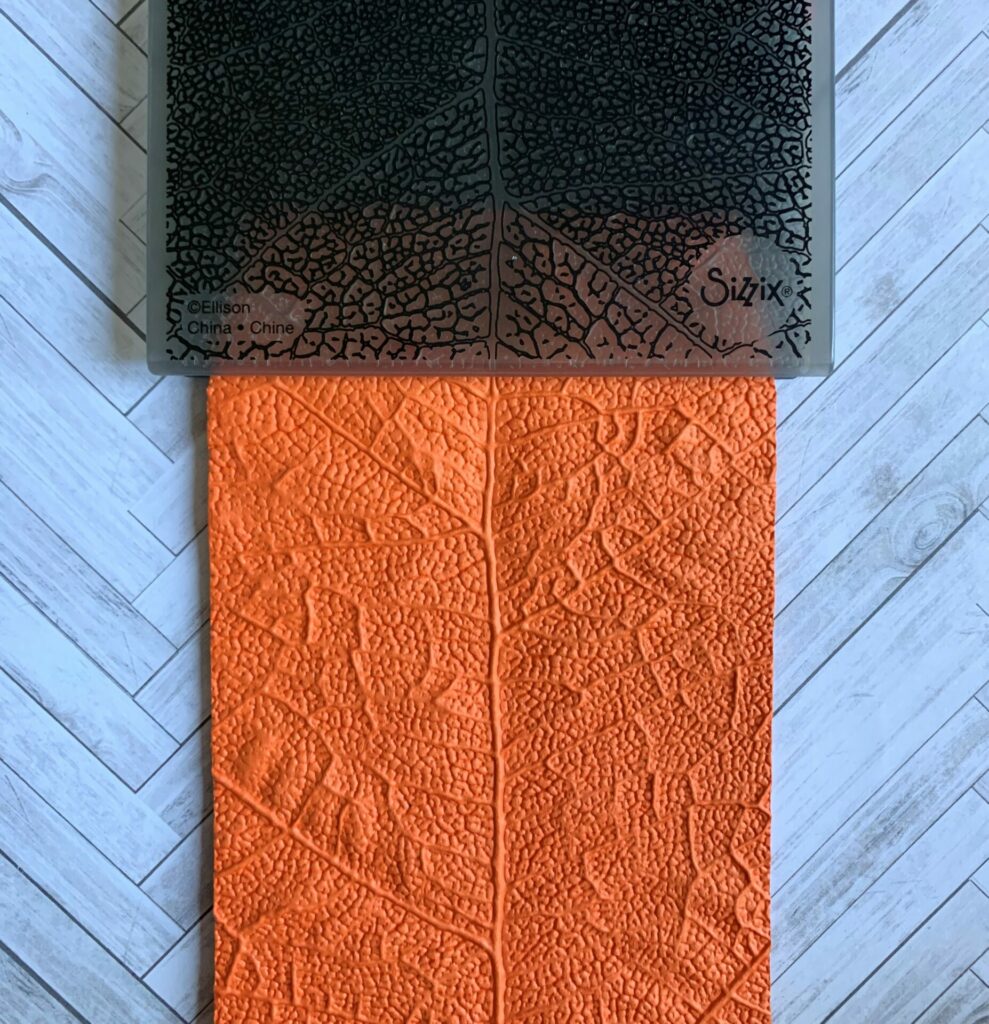
After embossing, I fold down and crease the flaps. For this I used a the edge of my clear cutting pad and lined up the pencil lines with the edge of the block. I pressed the paper up against the edge of the cutting pad and then reinforce the fold with my fingers. I also set something on top of it to ensure that it dried flat (I used my cutting pad.)
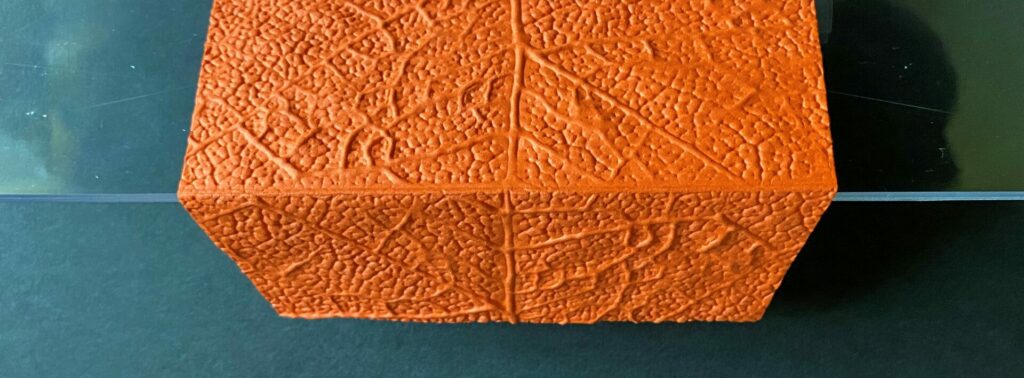
Embossing The Envelope Back Flaps
Next, it was time to emboss the back flaps of the envelope. I embossed one flap at a time. Firstly, I took the right flap misted both sides of the paper with water and placed it in the embossing folder. I aligned the pencil line up with the right edge of the embossing folder. See photo below for exact placement reference. Then, I closed the embossing folder and ran it through the Sizzix Big Shot three times.
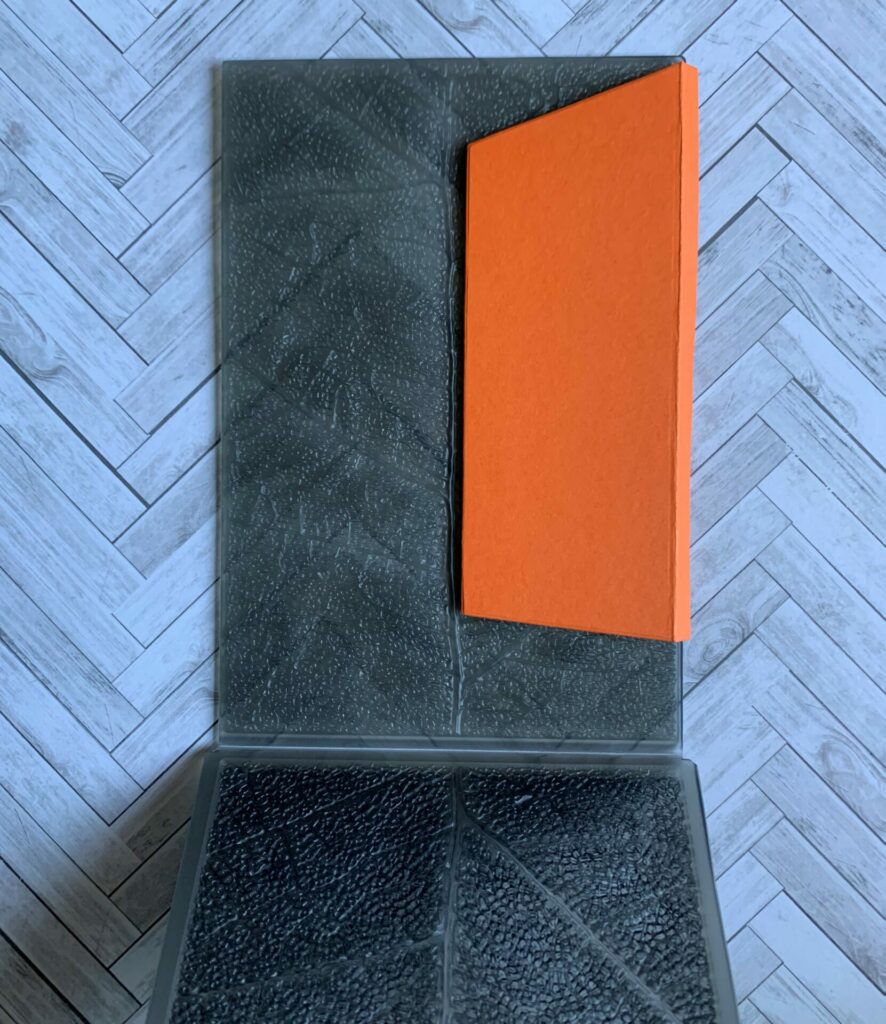
Next, I removed it from the folder, reinforced the fold, and set it aside to dry. I also set something light (clear cutting pad) on top of it to ensure that it dried flat.

After that, I followed the exact same process with the left flap. I misted it with water and aligned the pencil line up with the left edge of the embossing folder. Then, I ran it through the Sizzix Big Shot, reinforced the fold, and set it aside to dry.
Trimming The Back Flaps
Then, when the back flaps were flat and dry, I trimmed off a bit from the bottom of each flap.
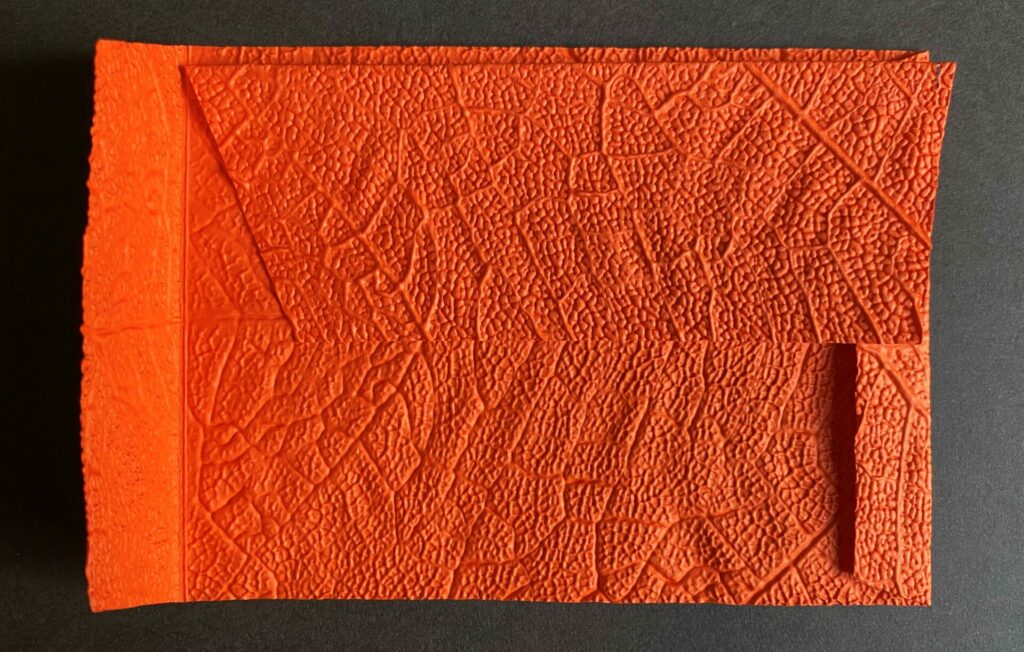
For this, I lined up the right flap to the right side of the envelope front, made a small mark with a pencil on the flap, and trimmed it off with the paper trimmer. Then, I did the same thing with the left flap.

Gluing The Back Flaps
Next, I glued the back flaps to the front embossed panel of the envelope. For this, my glue of choice is distress collage medium. It’s really strong, it shrinks when it dries, and it’s matte. But you can use whatever liquid adhesive you want.
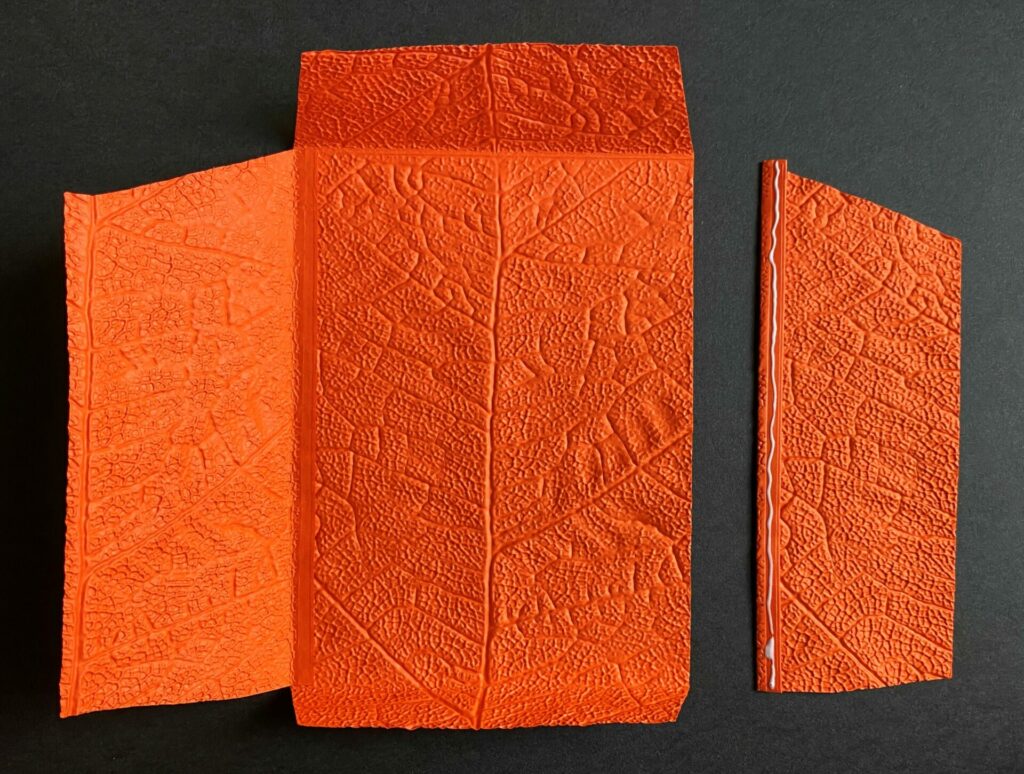
Again, I like to work one flap at a time. To do this, I applied glue to the skinny scored strip of the flap, and lined it up to the back edge of the envelope front panel. Then, I pinched it together with my fingers and held it closed for about a minute. After that, I put my big shot platform on top of it and let it dry. When it was dry, I glued the other flap on following the same process. After the glue had dried, I erased all the pencil lines.
Applying The Distress Ink
Then, I took the leaf embossed envelope and added some ink to the raised areas. For this, I used a blending tool with foam and rubbed distress ink in the shade crackling campfire on all the high points of the leaf veins. Try to do this with a lighter hand. You can add as much ink, or as little ink as you like. I think this little step really brings out the veins texture and makes it look more realistic.
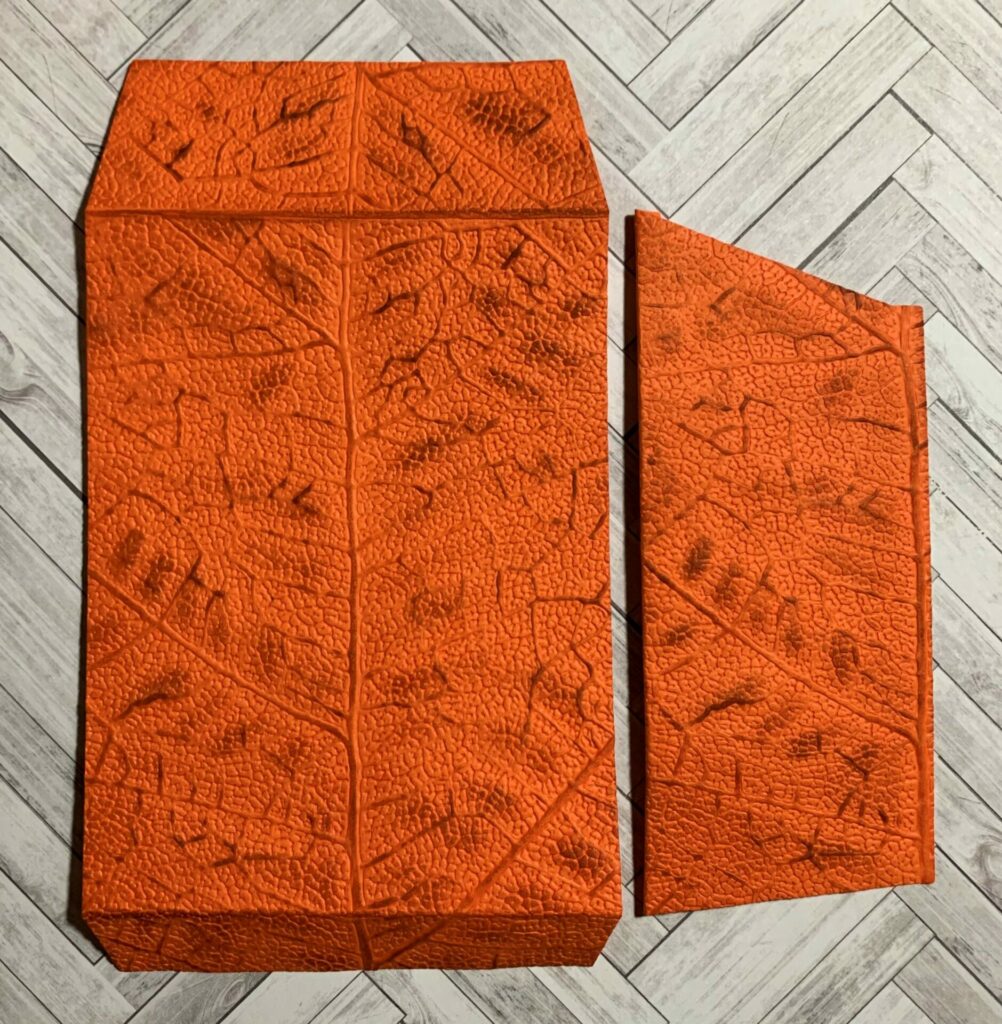
Applying The Luster Wax
Next, I took the leaf embossed envelope and rubbed the Sizzix gold luster wax over it. First, take a little bit out of the jar with your finger tip and rub it onto the Post-it note or scrap piece of paper. This removes some of the excess wax globs and will save you from ruining your project with hot spots of wax all in one area. It also makes for an even application of the luster wax. Then, I rubbed the wax onto the high points of the leaf embossed envelope. Here you’ll want to use a light touch and take your time. Your finger might feel a bit numb afterward but it’s totally worth it for this metallic effect. I washed the luster wax off my hands with soap and water when I was done.
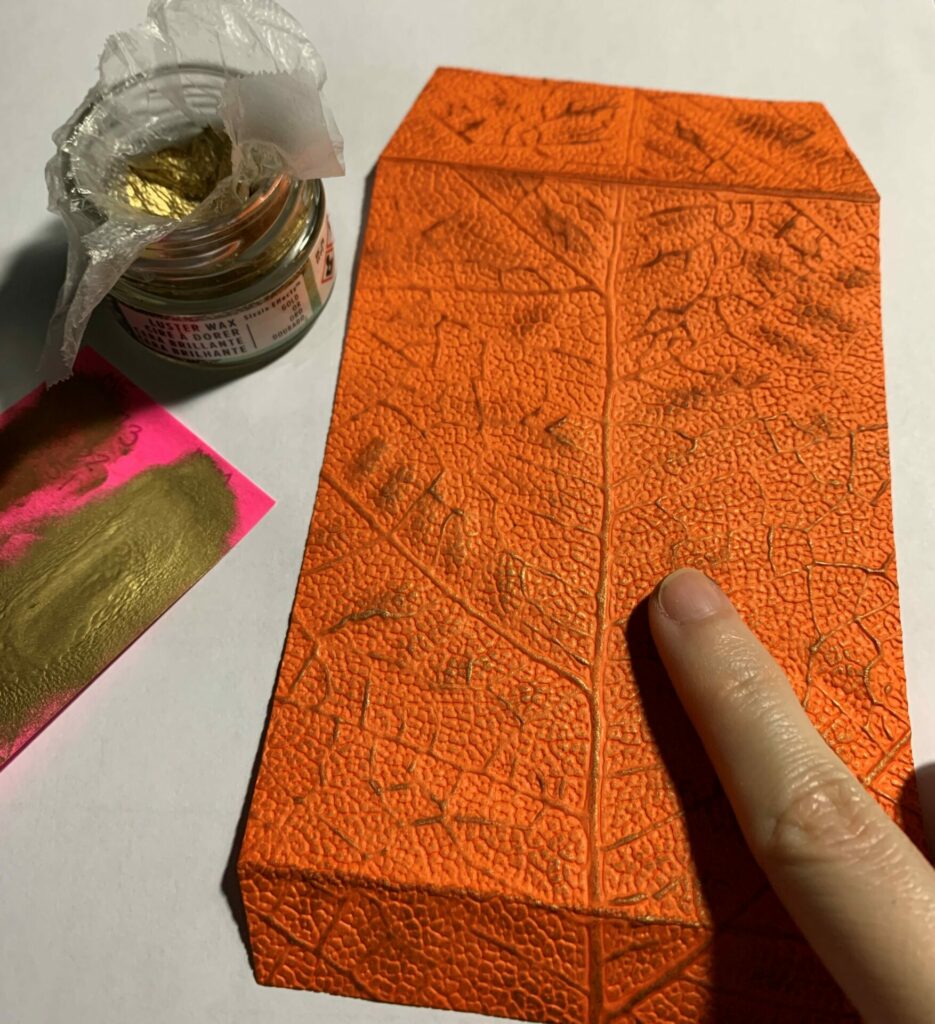
If you don’t have luster wax you could also use Tim Holtz distress foundry wax in Gilded. Below is a side-by-side comparison of the luster wax (left) and the foundry wax (right).

Applying The Foundry Wax
*Note if you already used luster wax, go ahead and skip this section.
To add the foundry wax you’re going to need an embossing gun and a craft sheet. Firstly, I shook up the foundry wax bottle really well. Next, I put a couple drops on the craft sheet and caped the bottle. Then, with my finger I rubbed it in a small circular motion on the craft sheet. You will notice when doing this, that it quickly goes from liquid, to mousse, to dust. That sounds like it wouldn’t be good, but I promise it’s pretty cool. I’d say you probably have thirty seconds of working time. That’s why I only use a couple drops at a time. If you put a bunch on your craft sheet, it would dry up before you’ve even used a fraction of it. But, just like with the luster wax, work in small sections and take your time. Sometime it’s a marathon, not a sprint.

Next, I started with one of the back flaps and applied the foundry wax to the envelope with my finger. I rubbed the wax onto the high points of the leaf embossed envelope. Here you’ll want to use a light touch. Once I was happy with the amount of wax I had applied to the back flap, I heat set it with the embossing gum. This process is much like embossing with embossing powder, in the way that you heat it until it turns metallic. After that I applied foundry wax to the rest of the envelope and heat set it with the embossing gun.
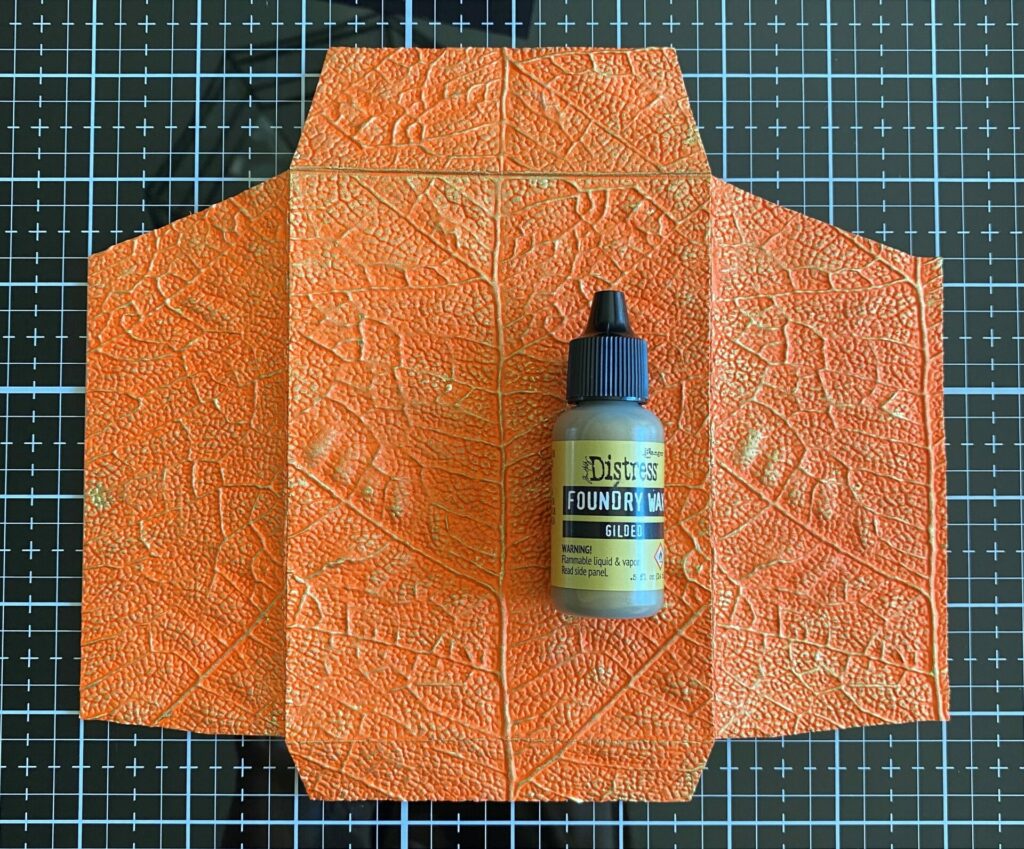
Adding The Brad
Unfortunately I didn’t take photos of adding a brad to this envelope. But if you want to add a brad to your envelope, directions for that complete with lots of pictures, can be found in my Quilted Leather Envelope tutorial.
Gluing The Leaf Embossed Envelope Together
Now it’s time to glue the leaf embossed envelope together. Firstly, I put collage medium down the right edge of the left flap. Next, I folded down the right flap on top of the left flap. Then, I set my Big Shot platform on top of it and let it dry. When that was dry, I put glue on the bottom flap. I folded it closed, set the Big Shot platform on it, and let it dry.

Leaf Embossed Envelope Complete!
Congratulations your leaf embossed envelope is now complete! I hope you enjoyed this tutorial and have as much fun making it as I did. If you do make this envelope, please use the #grovecrafted and tag me on Instagram. I’d love to see what you’ve created! Thanks for stopping by and I hope you found some new inspiration to create.

If your interested in making the matching card, you might want to check out my Leaf Thanks Card tutorial. It coordinates perfectly with the leaf embossed envelope you just made.

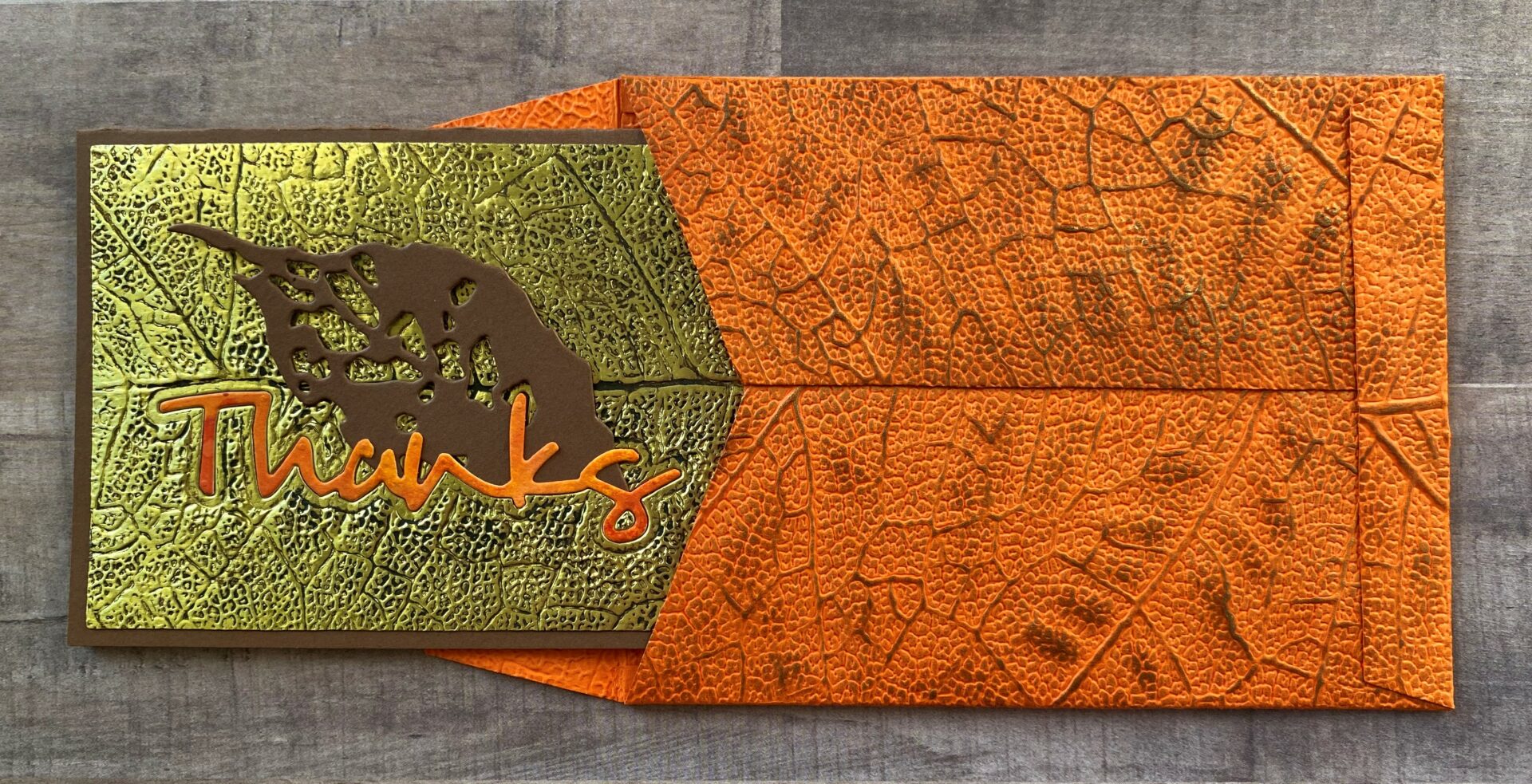
If you enjoyed making this leaf embossed envelope, you might want to check out my Quilted Leather Envelope tutorial.

